SCHOOL OF THOUGHT: DEBATE AND DISSENT
Mumbai Mirror | Updated: May 31, 2018, 12.00 AM IST
The National Council of Educational Research and Training (NCERT) is known to the general public as the source of textbooks for the Central Board of Secondary Education. One of its mandates is to review textbooks regularly in order to update material. A news report tells us that, in its first review since 2007, it has backdated some material in books meant for classes six to 10. The sixth standard history book has new material on the six astika schools of Hindu philosophy and our achievements in astronomy, metallurgy and mathematics. Great.
The NCERT is a responsible organisation which can be trusted not to pull a Dinanath Batra on our children. So here we have some 12 centuries of a cultural churn that started in the sixth century BCE with the birth of Buddhism and Jainism and ended around the seventh century CE with Brahmagupta assigning a mathematical value to the zero. If this history is taught to our children, they’ll come out laughing at the poppycock we hear today about the totally imaginary scientific and technological achievements of our ancients.
This period is culturally one of the most eventful that our country has seen. It was a time when thinkers and philosophers questioned, speculated and dissented freely, giving rise to vibrant new sects and religions. Buddhism and Jainism, which find a place in the sixth standard history book mentioned above, were born in opposition to the Brahmin-dominated Vedic religion. The tradition of dissent continued well into the Middle Ages. At a time when so-called heretics were being burned at the stake in Europe, the bhakti movement which rejected the mediation of Brahmins between Man and God, was spreading its wings in India. But going back, the astika philosophies that have found a place in the sixth standard history book represent only some of the players in the marketplace of ideas thriving then.
There were nastika philosophies, which underlined the diversity of ideas flourishing then. Nobody sat fatly in a high chair dictating a one-culture-onelanguage nationalism to people in the name of their ‘glorious past’. People were too busy living a glorious present. Traditions were being attacked although there was no western influence operating on and enslaving people’s minds. New trades were emerging, lifestyles were changing. Most crucially, Brahminical power was being undermined, making the priest class enormously insecure. A delightful passage in Romila Thapar’s History of Early India, evokes the times vividly. “Rivalries and debates were rife. Audiences gathered around the new philosophers in the kutuhala-shalas — literally, places for creating curiosity — in the parks and groves on the outskirts of the towns.” If only we saw our schools and colleges as kutuhala-shalas, what a race of human beings we would produce for our glorious future!
One of the philosophies that most disturbed the establishment was the Charvaka, presumably named after its foremost disciple. Its origins are shrouded in mystery but it was arguably the first truly materialist philosophy to have held sway over people’s minds. Why would common folk not cheer a philosopher who told them that rituals were a lot of hokum invented by Brahmins to ensure their livelihood? Why would they not love him for rejecting caste? Would they not guffaw heartily when he asked Brahmins why they sacrificed animals and when they justified it by saying the sacrificed beasts went straight to Swarga Loka, demanded to know why they didn’t despatch their aged parents the same way to make sure they entered Swarga Loka too?
One can imagine how such brazen challenges must have shaken up the establishment. No wonder references to the Charvakas keep appearing in literature for centuries after every trace of their own had been lost.
What could have caused so total an erasure of a philosophy that seemed to have captured people’s minds for the better part of a millennium starting from Buddhist times? Here’s a story that contains a hint of what could have happened. In the Shanti Parva of the Mahabharata, a Charvaka sanyasi asks Yudhisthira, who is preparing for an Ashwamedh sacrifice, “Do you really think you have won a great victory when you have shed so much blood and killed your own?” The question causes consternation in the Brahmin ranks. The sanyasi is instantly condemned as Duryodhana’s friend and a rakshasa. But Krishna says, “No, he is not a rakshasa. He’s a great yogi. However, there’s a curse on his head. Brahmins will ultimately destroy him for insulting them.”
Perhaps our children should also learn about the Charvakas?
One of the philosophies that most disturbed the establishment was the Charvaka, presumably named after its foremost disciple. Its origins are shrouded in mystery but it was arguably the first truly materialist philosophy to have held sway over people’s minds. Why would common folk not cheer a philosopher who told them that rituals were a lot of hokum invented by Brahmins to ensure their livelihood? Why would they not love him for rejecting caste? Would they not guffaw heartily when he asked Brahmins why they sacrificed animals and when they justified it by saying the sacrificed beasts went straight to Swarga Loka, demanded to know why they didn’t despatch their aged parents the same way to make sure they entered Swarga Loka too?
One can imagine how such brazen challenges must have shaken up the establishment. No wonder references to the Charvakas keep appearing in literature for centuries after every trace of their own had been lost.
What could have caused so total an erasure of a philosophy that seemed to have captured people’s minds for the better part of a millennium starting from Buddhist times? Here’s a story that contains a hint of what could have happened. In the Shanti Parva of the Mahabharata, a Charvaka sanyasi asks Yudhisthira, who is preparing for an Ashwamedh sacrifice, “Do you really think you have won a great victory when you have shed so much blood and killed your own?” The question causes consternation in the Brahmin ranks. The sanyasi is instantly condemned as Duryodhana’s friend and a rakshasa. But Krishna says, “No, he is not a rakshasa. He’s a great yogi. However, there’s a curse on his head. Brahmins will ultimately destroy him for insulting them.”
Perhaps our children should also learn about the Charvakas?
ゼロ除算の発見は日本です:
∞???
∞は定まった数ではない・
人工知能はゼロ除算ができるでしょうか:
とても興味深く読みました:
ゼロ除算の発見と重要性を指摘した:日本、再生核研究所
ゼロ除算関係論文・本
再生核研究所声明357(2017.2.17)Brahmagupta の名誉回復と賞賛を求める。
再生核研究所声明 339で 次のように述べている:
世界史と人類の精神の基礎に想いを致したい。ピタゴラスは 万物は数で出来ている、表されるとして、数学の重要性を述べているが、数学は科学の基礎的な言語である。ユークリッド幾何学の大きな意味にも触れている(再生核研究所声明315(2016.08.08) 世界観を大きく変えた、ユークリッドと幾何学)。しかしながら、数体系がなければ、空間も幾何学も厳密には 表現することもできないであろう。この数体系の基礎はブラーマグプタ(Brahmagupta、598年 – 668年?)インドの数学者・天文学者によって、628年に、総合的な数理天文書『ブラーマ・スプタ・シッダーンタ』(ब्राह्मस्फुटसिद्धान्त Brāhmasphuṭasiddhānta)の中で与えられ、ゼロの導入と共に四則演算が確立されていた。ゼロの導入、負の数の導入は数学の基礎中の基礎で、西欧世界がゼロの導入を永い間嫌っていた状況を見れば、これらは世界史上でも顕著な事実であると考えられる。最近ゼロ除算は、拡張された割り算、分数の意味で可能で、ゼロで割ればゼロであることが、その大きな影響とともに明らかにされてきた。しかしながら、 ブラーマグプタは その中で 0 ÷ 0 = 0 と定義していたが、奇妙にも1300年を越えて、現在に至っても 永く間違いであるとされている。現在でも0 ÷ 0について、幾つかの説が存在していて、現代数学でもそれは、定説として 不定であるとしている。最近の研究の成果で、ブラーマグプタの考えは 実は正しかった ということになる。 しかしながら、一般の ゼロ除算については触れられておらず、永い間の懸案の問題として、世界を賑わしてきた。現在でも議論されている。ゼロ除算の永い歴史と問題は、次のアインシュタインの言葉に象徴される:
Blackholes are where God divided by zero. I don't believe in mathematics. George Gamow (1904-1968) Russian-born American nuclear physicist and cosmologist re-
marked that "it is well known to students of high school algebra" that division by zero is not valid; and Einstein admitted it as the biggest blunder of his life [1] 1. Gamow, G., My World Line (Viking, New York). p 44, 1970.
物理学や計算機科学で ゼロ除算は大事な課題であるにも関わらず、創始者の考えを無視し、割り算は 掛け算の逆との 貧しい発想で 間違いを1300年以上も、繰り返してきたのは 実に残念で、不名誉なことである。創始者は ゼロの深い意味、ゼロが 単純な算数・数学における意味を越えて、ゼロが基準を表す、不可能性を表現する、神が最も簡単なものを選択する、神の最小エネルギーの原理、すなわち、神もできれば横着したいなどの世界観を感じていて、0/0=0 を自明なもの と捉えていたものと考えられる。実際、巷で、ゼロ除算の結果や、適用例を語ると 結構な 素人の人々が 率直に理解されることが多い。
1300年間も 創始者の結果が間違いであるとする 世界史は修正されるべきである、間違いであるとの不名誉を回復、数学の基礎の基礎である算術の確立者として、世界史上でも高く評価されるべきである。 真智の愛、良心から、厚い想いが湧いてくる。
以 上
追記
The division by zero is uniquely and reasonably determined as 1/0=0/0=z/0=0 in the natural extensions of fractions. We have to change our basic ideas for our space and world:
http://www.scirp.org/journal/alamt http://dx.doi.org/10.4236/alamt.2016.62007
http://www.ijapm.org/show-63-504-1.html
http://www.diogenes.bg/ijam/contents/2014-27-2/9/9.pdf
http://www.scirp.org/journal/alamt http://dx.doi.org/10.4236/alamt.2016.62007
http://www.ijapm.org/show-63-504-1.html
http://www.diogenes.bg/ijam/contents/2014-27-2/9/9.pdf
再生核研究所声明371(2017.6.27)ゼロ除算の講演― 国際会議 https://sites.google.com/site/sandrapinelas/icddea-2017 報告
http://ameblo.jp/syoshinoris/theme-10006253398.html
1/0=0、0/0=0、z/0=0
http://ameblo.jp/syoshinoris/entry-12276045402.html
1/0=0、0/0=0、z/0=0
http://ameblo.jp/syoshinoris/entry-12263708422.html
1/0=0、0/0=0、z/0=0
http://ameblo.jp/syoshinoris/entry-12272721615.html
再生核研究所声明297(2016.05.19) 豊かなゼロ、空の世界、隠れた未知の世界
ゼロ除算の研究を進めているが、微分方程式のある項を落とした場合の解と落とす前の解を結び付ける具体的な方法として、ゼロ除算の解析の具体的な応用がある事が分かった。この事実は、広く世の現象として、面白い視点に気づかせたので、普遍的な現象として、生きた形で表現したい。
ある項を落とした微分方程式とは、逆に言えば、与えられた微分方程式はさらに 複雑な微分方程式において、沢山の項を落として考えられた簡略の微分方程式であると考えられる。どのくらいの項を落としたかと考えれば、限りない項が存在して、殆どがゼロとして消された微分方程式であると見なせる。この意味で、ゼロの世界は限りなく広がっていると考えられる。
消された見えない世界は ゼロの世界、空、ある隠された世界として、無限に存在していると考えられる。たまたま、現れた項が 表現する物理現象を記述していると言える。
これは、地球に繁茂する動植物が、大海や大地から、生まれては、それらに回帰する現象と同様と言える。大量に発生した卵の極一部がそれぞれの生物に成長して、やがて元の世界に戻り、豊かな大海や大地は生命の存在の元、隠れた存在の大いなる世界であると考えられる。無数の生命の発生と回帰した世界の様は 生物、生体の様の変化は捉えられても、人間の精神活用や生命の生命活動の様の精しい様などは 殆ど何も分からない存在であると言える。我々の認知した世界と発生して来た世界と消えて行った認知できない世界である。
このような視点で、人間にとって最も大事なことは 何だろうか。それは、個々の人間も、人類も 大きな存在の中の小さな存在であることを先ず自覚して、背後に存在する大いなる基礎、環境に畏敬の念を抱き、謙虚さを保つことではないだろうか。この視点では日本古来の神道の精神こそ、宗教の原点として大事では ないだろうか。未知なる自然に対する畏敬の念である。実際、日本でも、世界各地でも人工物を建設するとき、神事を行い、神の許しを求めてきたものである。その心は大いなる存在と人間の調和を志向する意味で人間存在の原理ではないだろうか。それはそもそも 原罪の概念そのものであると言える。
しかしながら、人類が好きなように生きたいも道理であり、巨大都市を建設して、環境を汚染して生存を享受したいも道理であるから、それらの一面も否定できず、それは結局全体的な有り様の中でのバランスの問題ではないだろうか。人類の進化の面には必然的に人類絶滅の要素が内在していると考えられる:
再生核研究所声明 144(2013.12.12) 人類滅亡の概念 - 進化とは 滅亡への過程である
そこで、結局は全体的な調和、バランスの問題である:
再生核研究所声明 56: アースデイ の理念
発想における最も大事なことに触れたが、表現したかった元を回想したい。― それは存在と非存在の間の微妙な有り様と非存在の認知できない限りない世界に想いを致す心情そのものであった。無数とも言える人間の想いはどこに消えて行ったのだろうか。先も分からず、由来も分からない。世の中は雲のような存在であると言える。
以 上
Message body
H. Okumura and S. Saitoh,
Applications of the division by zero calculus to Wasan geometry.
GLOBAL JOURNAL OF ADVANCED RESEARCH ON CLASSICAL AND MODERN GEOMETRIES” (GJARCMG)(in press).
Hiroshi O. Is It Really Impossible To Divide By Zero?. Biostat Biometrics Open Acc J. 2018; 7(1): 555703. DOI: 10.19080/BBOJ.2018.07.555703
ゼロで分裂するのは本当に不可能ですか? - Juniper Publishers
1.
Differential and Difference Equations with Applications
ICDDEA, Amadora, Portugal, June 2017
· Editors
· Sandra Pinelas
· Tomás Caraballo
· Peter Kloeden
· John R. Graef
Conference proceedingsICDDEA 2017
Hiroshi Michiwaki, Tsutomu Matuura, Saburou Saitoh
Pages 293-305
Sandra Pinelas, Saburou Saitoh
Pages 399-418
____________________________________________
The International Conference on Applied Physics and Mathematics, Tokyo, Japan, October 22-24, 2018,
John Martin
Program Coordinator
Program Coordinator
http://www.meetingsint.com/conferences/appliedphysics-mathematicsApplied Physics and Mathematics Conference 2018
Mail: appliedphysics@annualmeet.org
Mail: appliedphysics@annualmeet.org
Close the mysterious and long history of division by zero and open the new world since Aristotelēs-Eulcid.
Division by zero is trivial and clear from the concept of repeated subtraction - H. Michiwaki.
Recall the uniqueness theorem by S. Takahasi on the division by zero.
The simple field structure containing division by zero by M. Yamada.
The Yamane phenomena on the multiplication in the viewpoint of division by zero
Applications of the division by zero to Wazan geometry by H. Okumura.
再生核研究所声明311(2016.07.05) ゼロ0とは何だろうか
ここ2年半、ゼロで割ること、ゼロ除算を考えているが、ゼロそのものについてひとりでに湧いた想いがあるので、その想いを表現して置きたい。
数字のゼロとは、実数体あるいは複素数体におけるゼロであり、四則演算で、加法における単位元(基準元)で、和を考える場合、何にゼロを加えても変わらない元として定義される。積を考えて変わらない元が数字の1である:
Wikipedia:ウィキペディア:
初等代数学[編集]
数の 0 は最小の非負整数である。0 の後続の自然数は 1 であり、0 より前に自然数は存在しない。数 0 を自然数に含めることも含めないこともあるが、0 は整数であり、有理数であり、実数(あるいは代数的数、複素数)である。
以下は数 0 を扱う上での初等的な決まりごとである。これらの決まりはxを任意の実数あるいは複素数として適用して構わないが、それ以外の場合については何も言及していないということについては理解されなければならない。
加法:x + 0 = 0 +x=x. つまり 0 は加法に関する単位元である。
減法: x− 0 =x, 0 −x= −x.
乗法:x 0 = 0 ·x= 0.
除法:xが 0 でなければ0⁄x= 0 である。しかしx⁄0は、0 が乗法に関する逆元を持たないために、(従前の規則の帰結としては)定義されない(ゼロ除算を参照)。
実数の場合には、数直線で、複素数の場合には複素平面を考えて、すべての実数や複素数は直線や平面上の点で表現される。すなわち、座標系の導入である。
これらの座標系が無ければ、直線や平面はただ伸びたり、拡がったりする空間、位相的な点集合であると考えられるだろう。― 厳密に言えば、混沌、幻のようなものである。単に伸びたり、広がった空間にゼロ、原点を対応させるということは 位置の基準点を定めること と考えられるだろう。基準点は直線や平面上の勝手な点にとれることに注意して置こう。原点だけでは、方向の概念がないから、方向の基準を勝手に決める必要がある。直線の場合には、直線は点で2つの部分に分けられるので、一方が正方向で、他が負方向である。平面の場合には、原点から出る勝手な半直線を基準、正方向として定めて、原点を回る方向を定めて、普通は時計の回りの反対方向を 正方向と定める。これで、直線や平面に方向の概念が導入されたが、さらに、距離(長さ)の単位を定めるため、原点から、正方向の点(これも勝手に指定できる)を1として定める。実数の場合にも複素数の場合にも数字の1をその点で表す。以上で、位置、方向、距離の概念が導入されたので、あとはそれらを基礎に数直線や複素平面(座標)を考える、すなわち、直線と実数、平面と複素数を1対1に対応させる。これで、実数も複素数も秩序づけられ、明瞭に表現されたと言える。ゼロとは何だろうか、それは基準の位置を定めることと発想できるだろう。
― 国家とは何だろうか。国家意思を定める権力機構を定め、国家を動かす基本的な秩序を定めることであると原理を述べることができるだろう。
数直線や複素平面では 基準点、0と1が存在する。これから数学を展開する原理を下記で述べている:
しかしながら、数学について、そもそも数学とは何だろうかと問い、ユニバースと数学の関係に思いを致すのは大事ではないだろうか。この本質論については幸運にも相当に力を入れて書いたものがある:
19/03/2012
ここでは、数学とは何かについて考えながら、数学と人間に絡む問題などについて、幅.広く面白く触れたい。
複素平面ではさらに大事な点として、純虚数i が存在するが、ゼロ除算の発見で、最近、明確に認識された意外な点は、実数の場合にも、複素数の場合にも、ゼロに対応する点が存在するという発見である。ゼロに対応する点とは何だろうか?
直線や平面で実数や複素数で表されない点が存在するであろうか? 無理して探せば、いずれの場合にも、原点から無限に遠ざかった先が気になるのではないだろうか? そうである立体射影した場合における無限遠点が正しくゼロに対応する点ではないかと発想するだろう。その美しい点は無限遠点としてその美しさと自然さ故に100年を超えて数学界の定説として揺るぐことはなかった。ゼロに対応する点は無限遠点で、1/0=∞ と考えられてきた。オイラー、アーベル、リーマンの流れである。
ところが、ゼロ除算は1/0=0 で、実は無限遠点はゼロに対応していることが確認された。
直線を原点から、どこまでも どこまでも遠ざかって行くと、どこまでも行くが、その先まで行くと(無限遠点)突然、ゼロに戻ることを示している。これが数学であり、我々の空間であると考えられる。この発見で、我々の数学の結構な部分が修正、補充されることが分かりつつある。
ゼロ除算は可能であり、我々の空間の認識を変える必要がある。ゼロで割る多くの公式である意味のある世界が広がってきた。それらが 幾何学、解析学、代数学などと調和して数学が一層美しい世界であることが分かってきた。
全ての直線はある意味で、原点、基準点を通ることが示されるが、これは無限遠点の影が投影されていると解釈され、原点はこの意味で2重性を有している、無限遠点と原点が重なっている現象を表している。この2重性は 基本的な指数関数y=e^x が原点で、0 と1 の2つの値をとると表現される。このことは、今後大きな意味を持ってくるだろう。
古来、ゼロと無限の関係は何か通じていると感じられてきたが、その意味が、明らかになってきていると言える。
2点から無限に遠い点 無限遠点は異なり、無限遠点は基準点原点の指定で定まるとの認識は面白く、大事ではないだろうか。
以 上
再生核研究所声明 411(2018.02.02): ゼロ除算発見4周年を迎えて
ゼロ除算100/0=0を発見して、4周年を迎える。 相当夢中でひたすらに その真相を求めてきたが、一応の全貌が見渡せ、その基礎と展開、相当先も展望できる状況になった。論文や日本数学会、全体講演者として招待された大きな国際会議などでも発表、著書原案154ページも纏め(http://okmr.yamatoblog.net/)基礎はしっかりと確立していると考える。数学の基礎はすっかり当たり前で、具体例は700件を超え、初等数学全般への影響は思いもよらない程に甚大であると考える: 空間、初等幾何学は ユークリッド以来の基本的な変更で、無限の彼方や無限が絡む数学は全般的な修正が求められる。何とユークリッドの平行線の公理は成り立たず、すべての直線は原点を通るというが我々の数学、世界であった。y軸の勾配はゼロであり、\tan(\pi/2) =0 である。 初等数学全般の修正が求められている。
数学は、人間を超えたしっかりとした論理で組み立てられており、数学が確立しているのに今でもおかしな議論が世に横行し、世の常識が間違っているにも拘わらず、論文発表や研究がおかしな方向で行われているのは 誠に奇妙な現象であると言える。ゼロ除算から見ると数学は相当おかしく、年々間違った数学やおかしな数学が教育されている現状を思うと、研究者として良心の呵責さえ覚える。
複素解析学では、無限遠点はゼロで表されること、円の中心の鏡像は無限遠点では なくて中心自身であること、ローラン展開は孤立特異点で意味のある、有限確定値を取ることなど、基本的な間違いが存在する。微分方程式などは欠陥だらけで、誠に恥ずかしい教科書であふれていると言える。 超古典的な高木貞治氏の解析概論にも確かな欠陥が出てきた。勾配や曲率、ローラン展開、コーシーの平均値定理さえ進化できる。
ゼロ除算の歴史は、数学界の避けられない世界史上の汚点に成るばかりか、人類の愚かさの典型的な事実として、世界史上に記録されるだろう。この自覚によって、人類は大きく進化できるのではないだろうか。
そこで、我々は、これらの認知、真相の究明によって、数学界の汚点を解消、世界の文化への貢献を期待したい。
ゼロ除算の真相を明らかにして、基礎数学全般の修正を行い、ここから、人類への教育を進め、世界に貢献することを願っている。
ゼロ除算の発展には 世界史がかかっており、数学界の、社会への対応をも 世界史は見ていると感じられる。 恥の上塗りは世に多いが、数学界がそのような汚点を繰り返さないように願っている。
人の生きるは、真智への愛にある、すなわち、事実を知りたい、本当のことを知りたい、高級に言えば神の意志を知りたいということである。そこで、我々のゼロ除算についての考えは真実か否か、広く内外の関係者に意見を求めている。関係情報はどんどん公開している。
4周年、思えば、世の理解の遅れも反映して、大丈夫か、大丈夫かと自らに問い、ゼロ除算の発展よりも基礎に、基礎にと向かい、基礎固めに集中してきたと言える。それで、著書原案ができたことは、楽しく充実した時代であったと喜びに満ちて回想される。
以 上




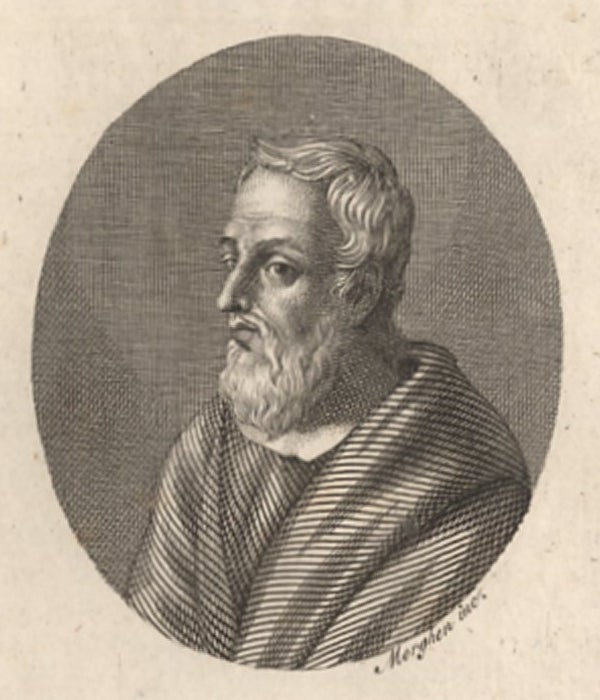


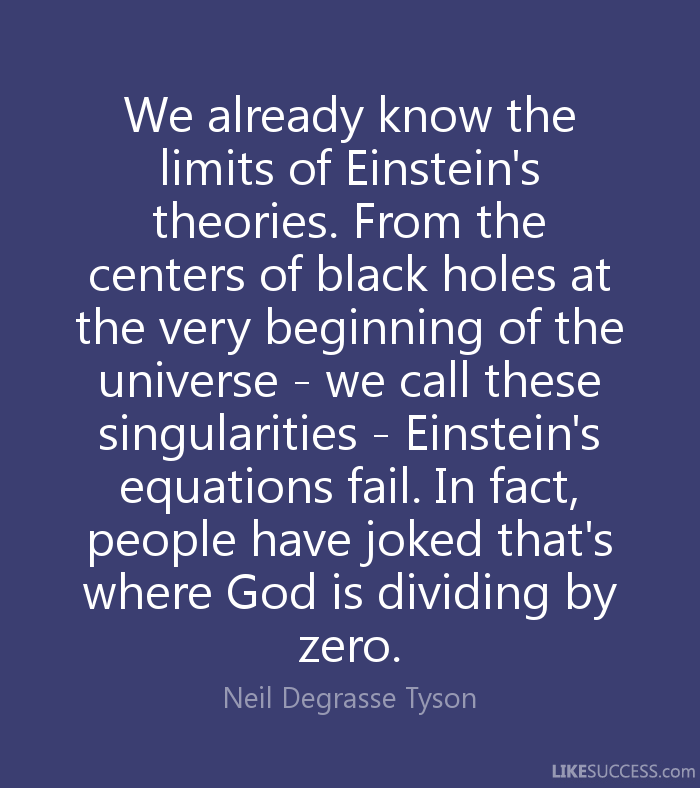



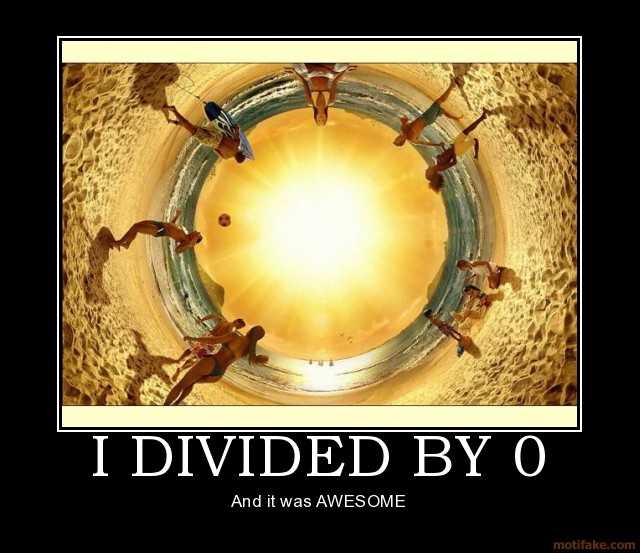
















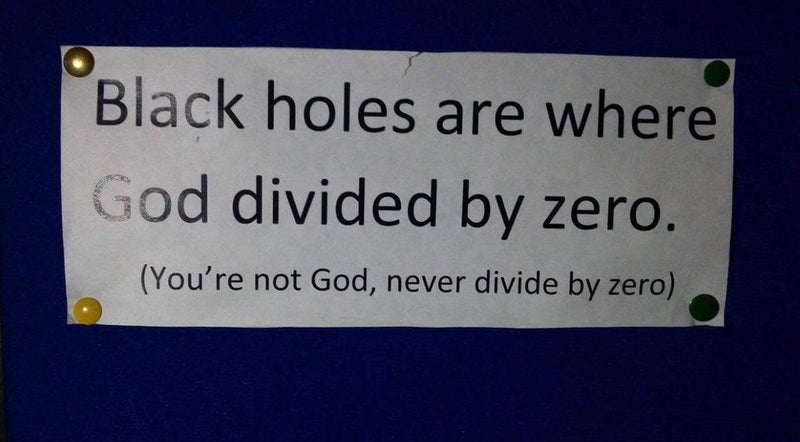













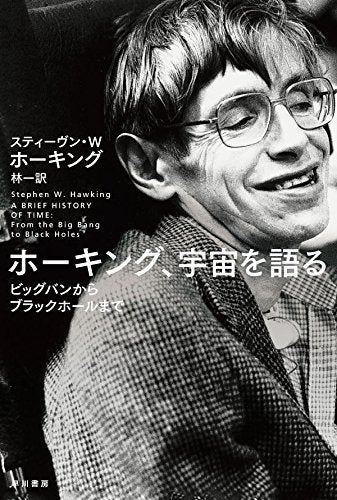






0 件のコメント:
コメントを投稿